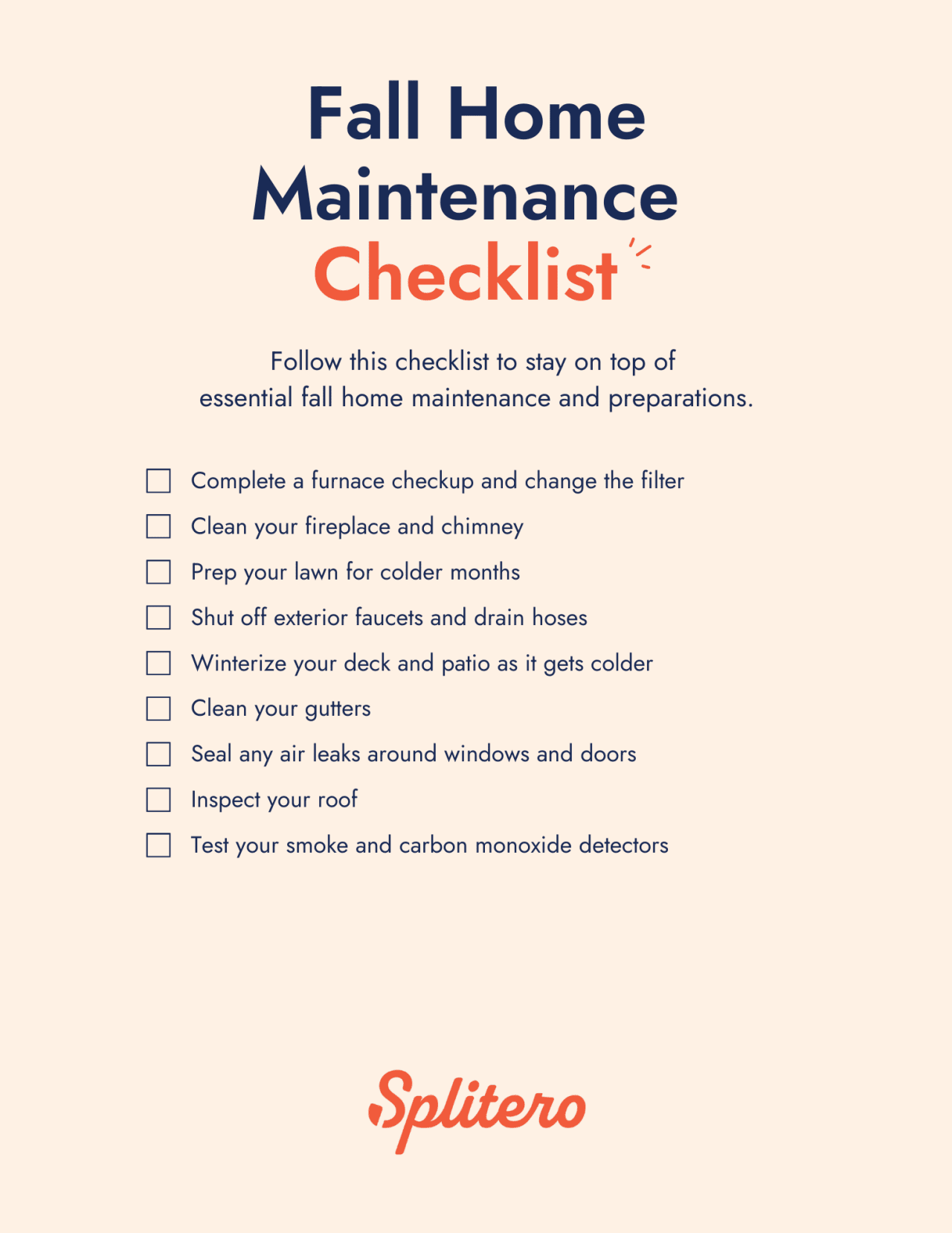Fall home maintenance checklist 2025
Lifestyle

Audio By Carbonatix
9:30 AM on Tuesday, September 30
By Kierra Greene for Splitero, Stacker
Fall home maintenance checklist 2025
New seasons always require resetting — as the leaves fall and change colors, so do living conditions. For many homeowners, this is a time to take stock of what’s necessary to endure the upcoming seasons, especially in climates where storms and snow are a regular occurrence.
Take some time and prep your home for winter by tackling home maintenance to-dos. Addressing these now may help prevent more extensive (and expensive) issues later that can turn into a home renovation.
In case you were wondering what exactly to look for, Splitero shares a fall home maintenance checklist to help get you started.
Complete a furnace checkup
Once you fire up your heater, remove the filter once a month and clean it well. Remove debris by dusting it off or vacuuming it. If your filter is old, swap it out for a new one every three months.
If you know your furnace performs poorly or makes a weird noise, it might be time to call a pro. It's a good idea to have your furnace looked at by a professional or get a tune-up.
A pro can identify problems that can slow down your furnace's total efficiency. Depending on where you live, a tune-up can cost anywhere from $70 to $200.
While at it, check for dirty filters elsewhere in your home to ensure they run efficiently. These may include:
- Furnace filters
- Vacuum cleaners
- Refrigerator water filters
- Dishwasher filters
- Air purifiers and humidifiers
- Clothing dryers (filter and duct)
- Range hoods and over-the-range microwaves
Clean your fireplace and chimney
Inspect your fireplace and chimney for damage and blockages. Shine a flashlight inside to ensure the chimney opens properly.
Look for:
- Any loose or broken joints
- Check that the flue cap works and if your flue is protected; also be on the lookout for any bird nests at the top.
- Signs of damage
- Accumulation or creosote buildup, which can cause fires
Scoop out the buildup and make plans to fix any damages. Call a professional to inspect, clean, and help maintain your fireplace if you're uncomfortable with chimney sweeping duties.
Prep your lawn for colder months
Trim your dead and diseased trees, bushes, and shrubs. Rake leaves and aerate your lawn, which helps prevent your grass from suffocating.
While the weather permits, fertilize your grass, trees, and shrubs. Follow up with watering so the fertilizer can soak and dissolve into the ground. Fertilizing in the fall is effective because plants respond to external triggers like temperature changes and sunshine. They’ll start to slow growth and shift their food reserves.
Safeguard your flower beds with covers like mulch or straw. These provide essential benefits such as frost protection, weed control, and moisture retention.
Choose a suitable material, apply it at the recommended thickness, and maintain it throughout the season. Doing so will ensure a healthy, thriving garden when spring returns.
Shut off exterior faucets
If you reside in an area with freezing weather, shut off valves that flow to outside faucets. Then, open the outdoor faucet to drain the line. If you’re unable to access shut-off values, you could buy styrofoam faucet covers at any home improvement store.
Winterize your deck or patio
It's perfect patio season throughout fall, but toward the end, when you get your first snowfall and the weather gets colder, it's time to start winterizing.
To winterize your deck or patio, clean and inspect for damage. Seal or stain wooden surfaces, store furniture, and trim overhanging vegetation. Clear gutters and remove snow promptly, avoiding harsh ice melt products.
Cover your space with tarps to shield it from winter elements and check for mold. For added comfort during chilly days, consider adding outdoor heaters, blankets, or cozy seating to make it a welcoming spot even in colder weather.
Clean your gutters
Gutters are pathways to divert water, debris, dirt, and other materials from your roof and home’s exterior. It’s crucial to keep it clog-free and running smoothly to prevent damage to outside surfaces and water in your basement.
Clean and maintain free-flowing gutters before the leaves fall from your trees this season. If you want to take it further, cover them with mesh gutter guards to keep debris off them.
Seal air leaks around windows and doors
To keep your home as warm and efficient as possible, seal up drafty windows and areas where weatherstripping has deteriorated on the exterior of your house. If you aren’t sure where outside air might be leaking inside, close a door or window on a strip of paper. If the paper moves or slides around quickly, it might indicate that the weatherstripping isn’t adequately sealed.
Use caulk to close the gaps around windows, doors, and areas around outlets, phone cords, and gas. If windows are particularly drafty, you should put them on your list to get new ones. Energy-efficient windows can save up to an average of 13% on energy bills.
Inspect your roof
As anyone who has experienced a pipe bursting or unwanted water in the basement, a water leak is a home’s worst enemy.
A leaky roof is stressful and expensive, with the average cost of a roof replacement costing an average of $9,000. Be sure to give your roof a thorough inspection and use binoculars.
Check for issues, including:
- Cracks in shingles
- Missing, curled, or damaged shingles
- Smooth, even surface (there shouldn’t be any sagging areas)
- Corrosion, wrinkling, and general wear and tear
- While up there, look at your gutters and make sure there aren’t any blockages.
Test smoke detectors and fire extinguishers
Smoke detectors usually last 10 years. Check your batteries and expiration dates to ensure they are working properly. This is especially important when firing up your furnace and portable heaters with closed windows.
Your home should have at least one fire extinguisher. It should be rated for all fire types with an A, B, or C rating on the outside label.
Keep one near the kitchen, or have one extinguisher per floor. Check the pressure gauge to ensure it is fully charged and the pin is intact. If your fire extinguisher is over six years old, it must be replaced.
Check these off your list this fall
Winter is fast approaching, so start now before it gets too chilly. Start with the biggest concerns on your list and make your way down.
Also, double-check your insurance coverage. Ensure you have up-to-date policies and enough coverage to protect you from winter storm damage or other disasters.

This story was produced by Splitero and reviewed and distributed by Stacker.

























